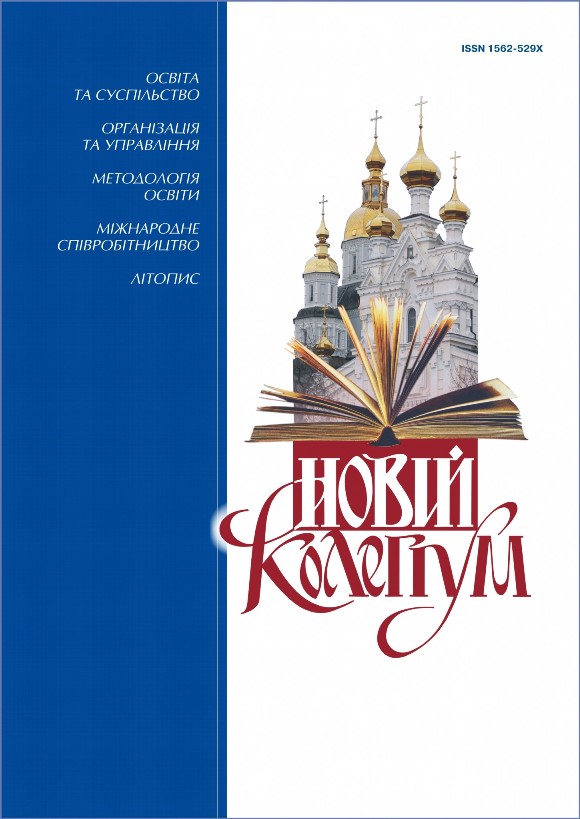Features of teaching technical, physical and mathematical disciplines by means of distance learning in guarantine conditions
DOI:
https://doi.org/10.30837/nc.2020.3.46Keywords:
distance learning, training web resources, video conferencing facilities, video lectures, online lessonsAbstract
The article deals with the actual problem of introduction of distance learning during lockdown. Quarantine measures in educational institutions made it impossible for traditional forms of education and direct contact of lecturers with students at the classroom. Acceptance of this fact indicated the distance learning is the only way of in the current circumstances, and forced skeptics to change their views and beliefs about distance learning and to take possession of its technologies.
The authors carried out a careful analysis of the legal documents that became the basis for the introduction of distance learning in educational institutions of Ukraine, in particular at universities. World education and science trends in distance learning are explored and other countries’ experiences of using technological innovations in educational services was examined.
The review of the psycho-pedagogical literature on the organization of distance learning helped to distinguish such basic features: interactivity; using of new achievements of information technologies in the educational process; business communication skills during video communications, and during group video conferencing.
The conducted survey of students showed that the advantages of distance learning are: the lack of a rigid time frame for mastering the learning material; the opportunity to independently organize your time intended for training; access to training materials and educational services at any time; the use of modern means of communication with teachers; the opportunity to get advice at a convenient time, quickly get an answer to questions through chat services of instant messengers or video communication technology; lack of transportation and accommodation costs and etc.
The article provides examples of use by teachers of the National University of Civil Defence of Ukraine of such web resources as Zoom, Skype and etc. for educational online lectures, online practical classes, and technology of 3D-virtual tours to production enterprises during quarantine.
References
Постанова Кабінету Міністрів України «Про запобігання поширенню на території України коронавірусу COVID-19» від 11 березня 2020 року № 211. URL: http://ru.osvita.ua/legislation/other/71577/].
Закон України про вищу освіту від 01.07.2014 № 1556-VII. Відомості Верховної Ради (ВВР). 2014. № 37–38. URL: https://zakon.rada.gov.ua / laws/show/1556-18.
Лист Міністерства освіти і науки №1/9-154 від 11 березня 2020 року. URL:https://mon.gov.ua/storage/app/media/news/%D0%9D%D0%BE%D0%B2%D0%B8%D0%BD%D0%B8/2020/03/11/1_9-154.pdf.
Наказ МОН України № 406 від 16 березня 2020 р. Про організаційні заходи для запобігання поширенню коронавірусу COVID-19. URL: https://mon.gov.ua/ua/npa/pro-organizacijni-zahodi-dlya-zapobigannya-poshirennyu-koronavirusu-s-ovid-19.
Офіційний сайт МОН України. URL : http://mon-covid19.info/uni.
Про затвердження Положення про дистанційне навчання. НАКАЗ Міністра освіти і науки України від 25.04.2013 № 466. URL: https://zakon.rada.gov.ua/laws/show/z0703-13.
Малярчук О. В. Дистанційне навчання в системі вищої гуманітарної освіти Сполучених Штатів Америки : автореф. дис. ... канд. пед. наук : 13.00.01 ; Житомир. держ. ун-т ім. І.Франка. Житомир, 2010. 20 с.
Муліна Н. І. Методика розробки та використання дистанційного курсу англійської мови (старший ступінь у вищому технічному закладі освіти): автореф. дис. ... канд. пед. наук: 13.00.02; Київ. держ. лінгв. ун-т. Київ, 2001. 22 с.
Триус Ю. В. Герасименко І. В., Франчук В. М. Система електронного навчання ВНЗ на базі MOODLE : метод. посіб. ; за ред. Ю. В. Триуса. Черкаси, 2012. 220 с.
Хмель О. В. Дидактичні умови організацій дистанційного навчання студентів фізико-математичних факультетів педагогічних університетів : автореф. дис. ... канд. пед. наук: 13.00.09 ; Ін-т педагогіки АПН України. Київ, 2006. 20 с.
З якими викликами стикаються викладачі під час організації дистанційного навчання? URL: https://studway.com.ua/vikladachi-na-karantiny/
Стецик С. П., Ільніцька К. С. Досвід використання засобів дистанційного навчання у процесі підготовки майбутніх учителів фізики. Актуальні питання сучасної інформатики. 2017 (5). С. 378–381.
Адамова І., Головачук Т. Дистанційне навчання: сучасний погляд на переваги та проблеми // Витоки педагогічної майстерності. Сер. Пед. науки. 2012. Вип. 10. С. 3–6.
Хмарні технології. Переваги і недоліки. URL: https://valtek.com.ua/ua/ system-integration/it-infrastructure/clouds/cloud-technologies.
Система дистанційного навчання НУЦЗУ. URL: http://univer.nuczu.edu.ua/dl/
Садковий В., Горонескуль М. Особливості професійної підготовки майбутніх фахівців у сфері цивільного захисту // Новий колегіум. 2016. № 3. С. 18–22.
Сайт факультету техногенно-екологічної безпеки НУЦЗУ. URL: http://fteb.nuczu.edu.ua/uk/fakultet/novyny / 920-virtualni-distantsijni-praktichni-zanyattya-na-virobnitstvi-korporatsiji-arterium-ta-brovarni-mikolajivskomu-viddilenni-san-inbev-ukrajina-27-04-2020

